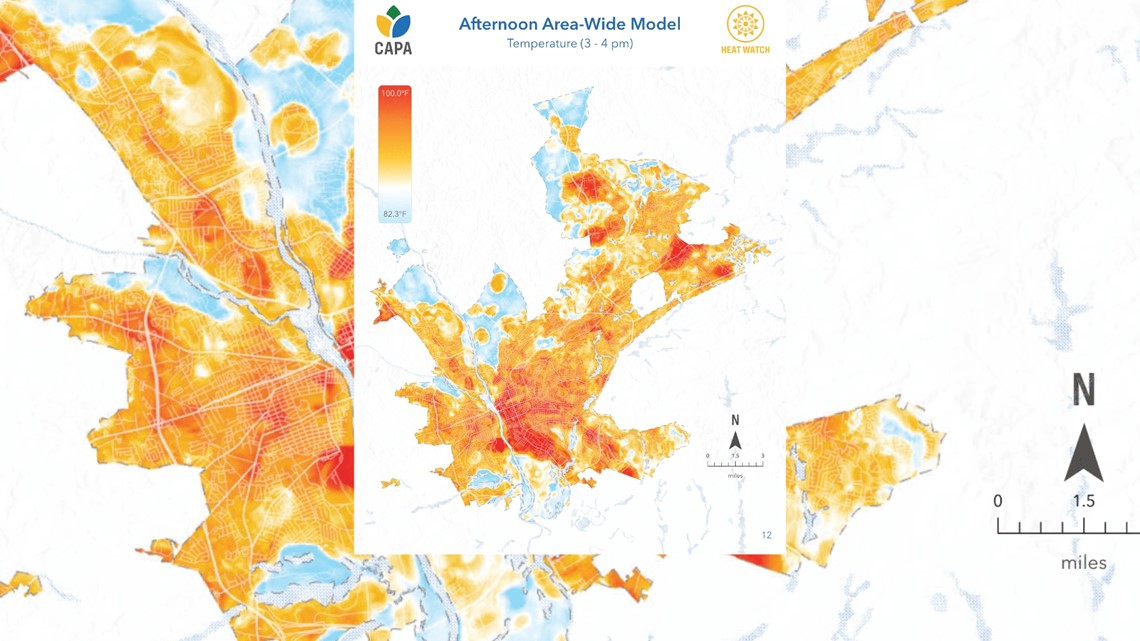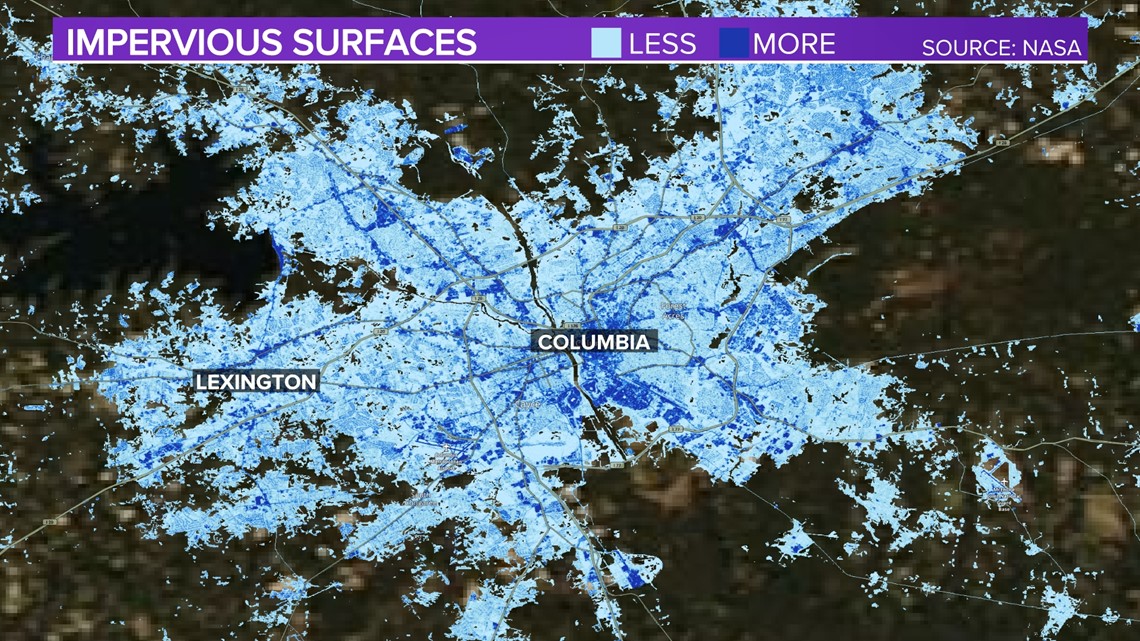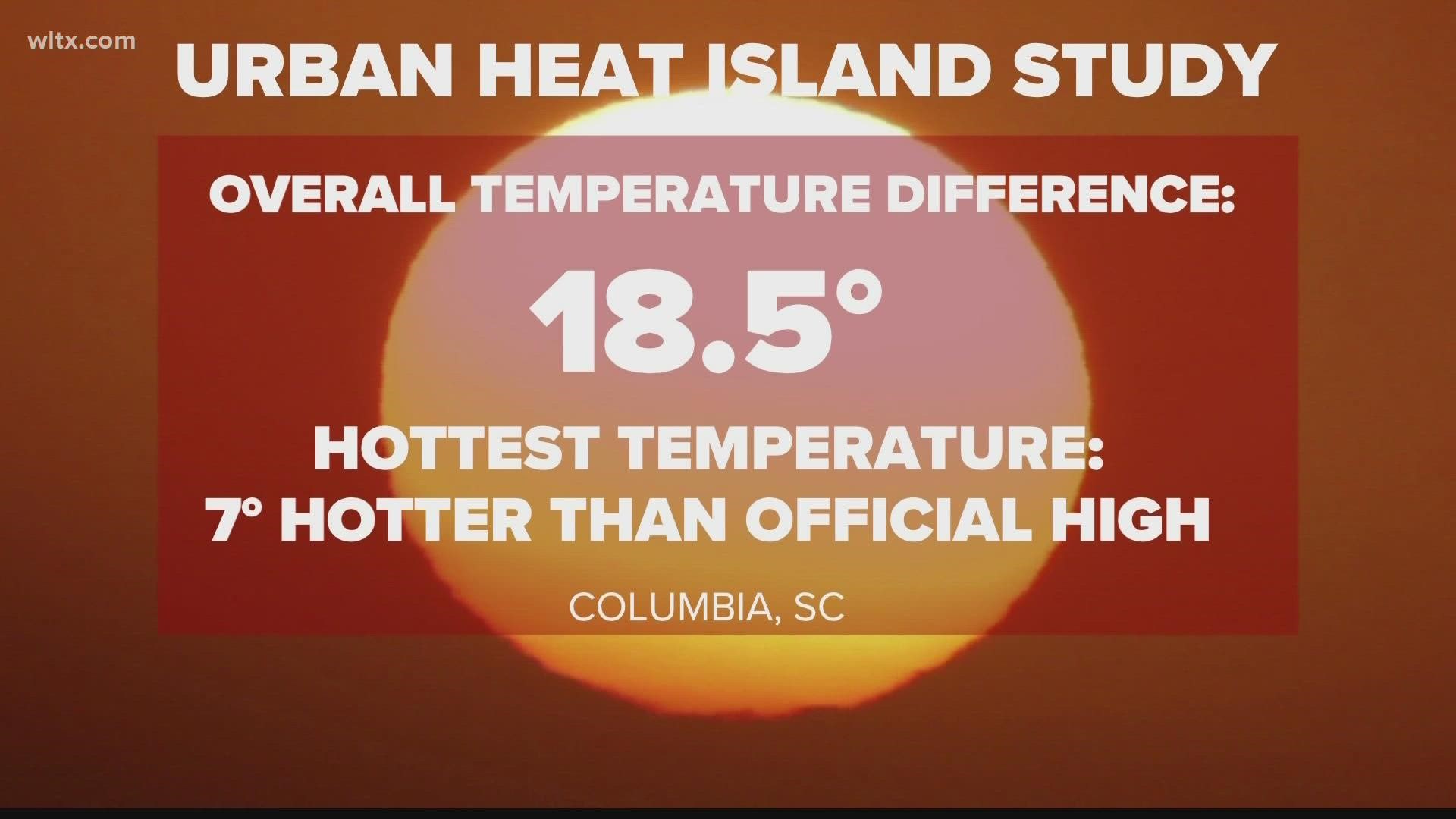COLUMBIA, S.C. — We just received the results of an extensive heat mapping project in Columbia lead by the National Oceanic and Atmospheric Administration. It told us one thing we already knew, it is hot in Columbia, but it’s how the heat was distributed across the city which this new information reveals.
John Quagliariello, a meteorologist with the National Weather Service says the Urban Heat Island is a well known feature of cities like Columbia.
“And so what we always known is that in these urbanized areas we have what is called an urban heat island effect, that results in much warmer temperatures than it does in forested areas or areas that have a lot more shade.”


The main take-a-ways from the study were the huge difference in temperatures across Columbia. The 18.5 degree difference was one of the largest found in the country.
Some parts of the city were even 7 degrees warmer than the official high recorded at the airport.


In the Highland Park Neighborhood, just north of 277 in Columbia and as it turns out this is one of the coolest places you can be on a hot summer day in the Capital City. The reason for this becomes pretty apparent when you start to look around.
The trees provide plenty of shade on the hottest of days keeping temperatures down. This pared with the grass covered neighborhood resulted in some of the coolest weather in the study.
Moving to one of the hotter areas of Columbia based off of the research. We are right near downtown along Bull Street and a very different view from that forested neighborhood we were just in. There isn’t a lot of trees but what there are a lot of is buildings, concrete, and asphalt.


These materials are great at trapping heat and lead to much more heat especially on hot summer days.
An expanded view of the Columbia Metro shows where we have the highest concentrations of these materials. Typically, where we see large populations and major roads we see materials which proven by this study will result in higher temperatures.
This is important to realize as it could impact how heat warnings are handled especially in the future.
“Those more urbanized areas where we see these much higher temperatures, we really need to hit the message harder for those people letting them know the risk that the heat poses so that they can take the correct proper precautions to protect themselves from the extreme heat.

